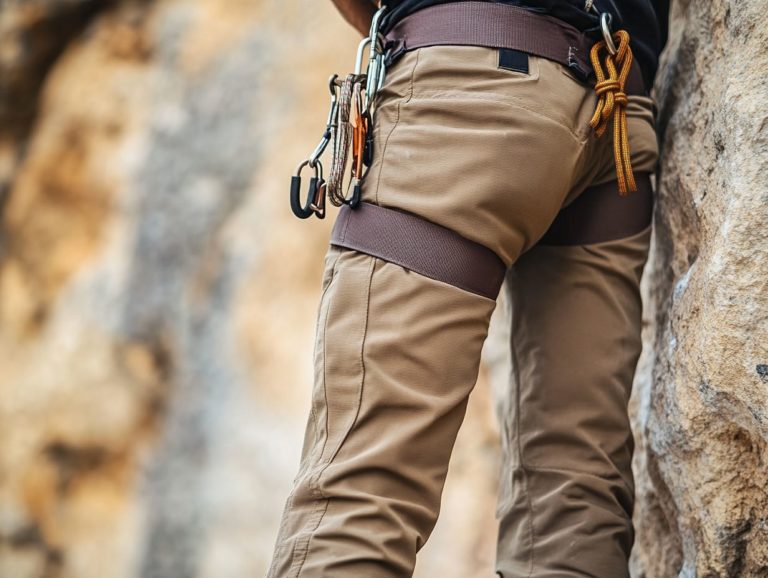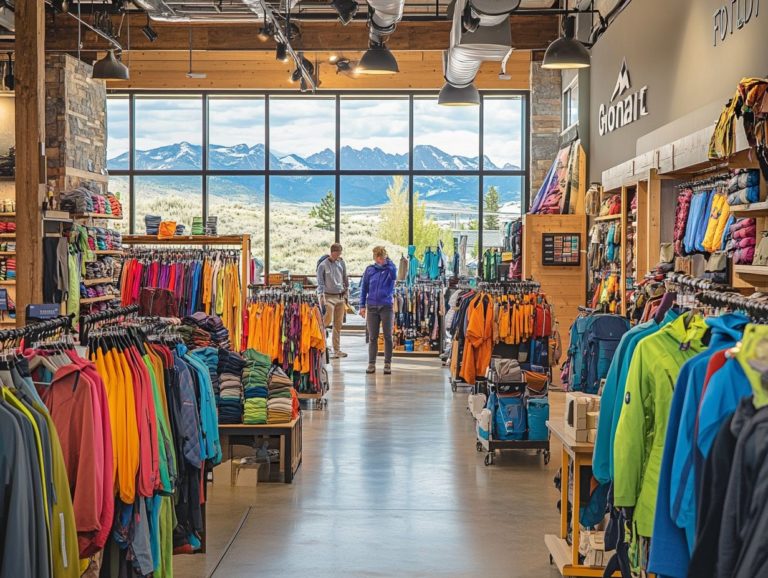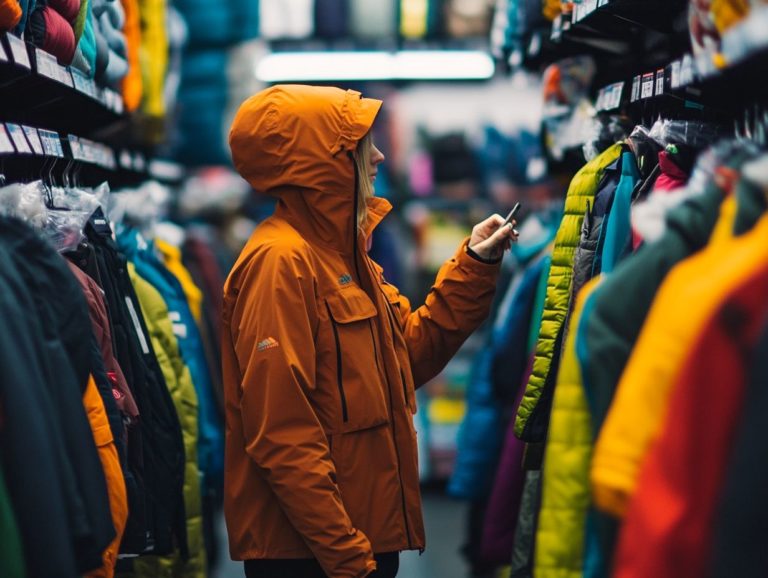Trail Running Attire: What to Wear for Comfort
Choosing the right attire for trail running is crucial for both comfort and performance.
With the diverse terrains and unpredictable weather you ll encounter, your clothing can greatly influence your overall experience. From selecting the ideal shoes to mastering layering techniques, this article delves into all the essential components of trail running gear.
Discover must-have clothing items, accessories, and practical tips to ensure you remain comfortable throughout your journey. Elevate your trail running experience with the right wardrobe choices!
Contents
- Key Takeaways:
- Choosing the Right Trail Running Attire
- Key Clothing Items for Trail Running
- Accessories for Trail Running
- Tips for Dressing Comfortably on the Trail
- Frequently Asked Questions
- What is considered appropriate trail running attire?
- Do I need special shoes for trail running?
- What type of fabric should I look for in trail running clothes?
- Should I wear a hydration pack or belt while trail running?
- What should I wear for colder weather trail runs?
- Are there any must-have accessories for trail running attire?
Key Takeaways:
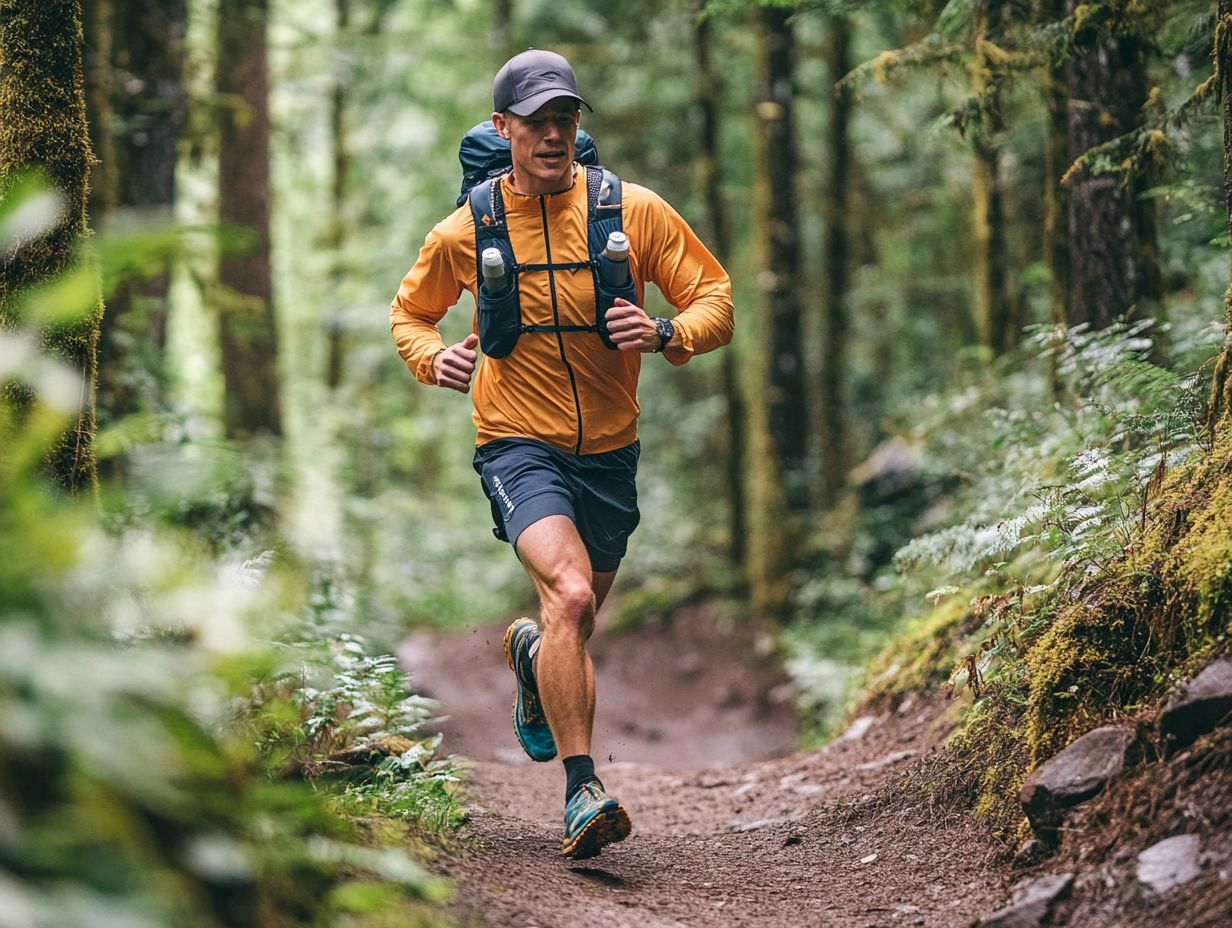
- Choose trail running attire based on factors such as terrain, weather, and personal preference for maximum comfort.
- Key clothing items for trail running include proper shoes, moisture-wicking tops and bottoms, and supportive socks.
- Accessories like hats, sunglasses, and hydration packs are essential for a comfortable trail running experience. Proper layering techniques can help adapt to changing weather conditions.
Choosing the Right Trail Running Attire
Selecting the right trail running attire is essential for any trail runner, particularly when you re traversing the breathtaking terrains of the Wasatch Mountains in Utah.
A well-chosen running wardrobe not only elevates your performance but also guarantees comfort and safety across diverse weather conditions.
To navigate the great outdoors effectively, you should opt for high-quality gear that features high-performance fabrics expertly designed to handle the challenges of trail running from chilly temperatures to the relentless summer sun.
Factors to Consider
When you re selecting trail running attire, several factors come into play. Moisture-wicking materials are essential for managing sweat, while insulation layers protect you from those biting cold temperatures. Understanding the layering system, or the way you put on different layers of clothing to stay warm or cool, is crucial, allowing you to adapt swiftly to changing weather conditions.
Breathable fabrics are your best friends during extended runs, promoting air circulation while keeping your body dry and comfortable. Don’t overlook UV protection, particularly in the summer months when sun exposure can lead to serious skin concerns.
Choosing the right undergarment can significantly impact your performance; seamless designs are a great option to prevent chafing. Pair your attire with accessories like a lightweight hat or breathable socks tailored for various terrains. This thoughtful approach enhances your overall running experience, ensuring you re well-prepared for whatever weather comes your way.
Key Clothing Items for Trail Running
The essential clothing items for trail running are crucial for anyone looking to elevate their performance and comfort on the terrain. The right trail running shoes can transform your comfort and performance on the trails!
Choosing shirts that wick away moisture can greatly improve your comfort. Grasping the intricacies of your running gear is vital for ensuring an enjoyable and successful experience on the trail. For more information, check out what gear is needed for trail running.
Shoes
Choosing the right trail running shoes is essential for your comfort and safety as you navigate rugged terrains. Consider models like the Hoka Speedgoat 5 and Salomon Adv Skin 12, both renowned for their exceptional grip and cushioning, making them perfect companions for the unpredictable trails of the Wasatch Mountains.
It s not merely about brand prestige; several critical factors require your attention. First, the fit of the shoe should allow for natural foot movement without being overly tight, ensuring a snug yet comfortable experience. Traction on various surfaces is paramount; loose gravel or wet rocks can easily compromise your stability.
The level of cushioning is also significant in absorbing impact, especially on those long runs. Investing in high-quality options can help prevent injuries and enhance your performance, as demonstrated by popular models like the Altra Lone Peak, which impeccably combines comfort and safety features!
Shirts and Tops
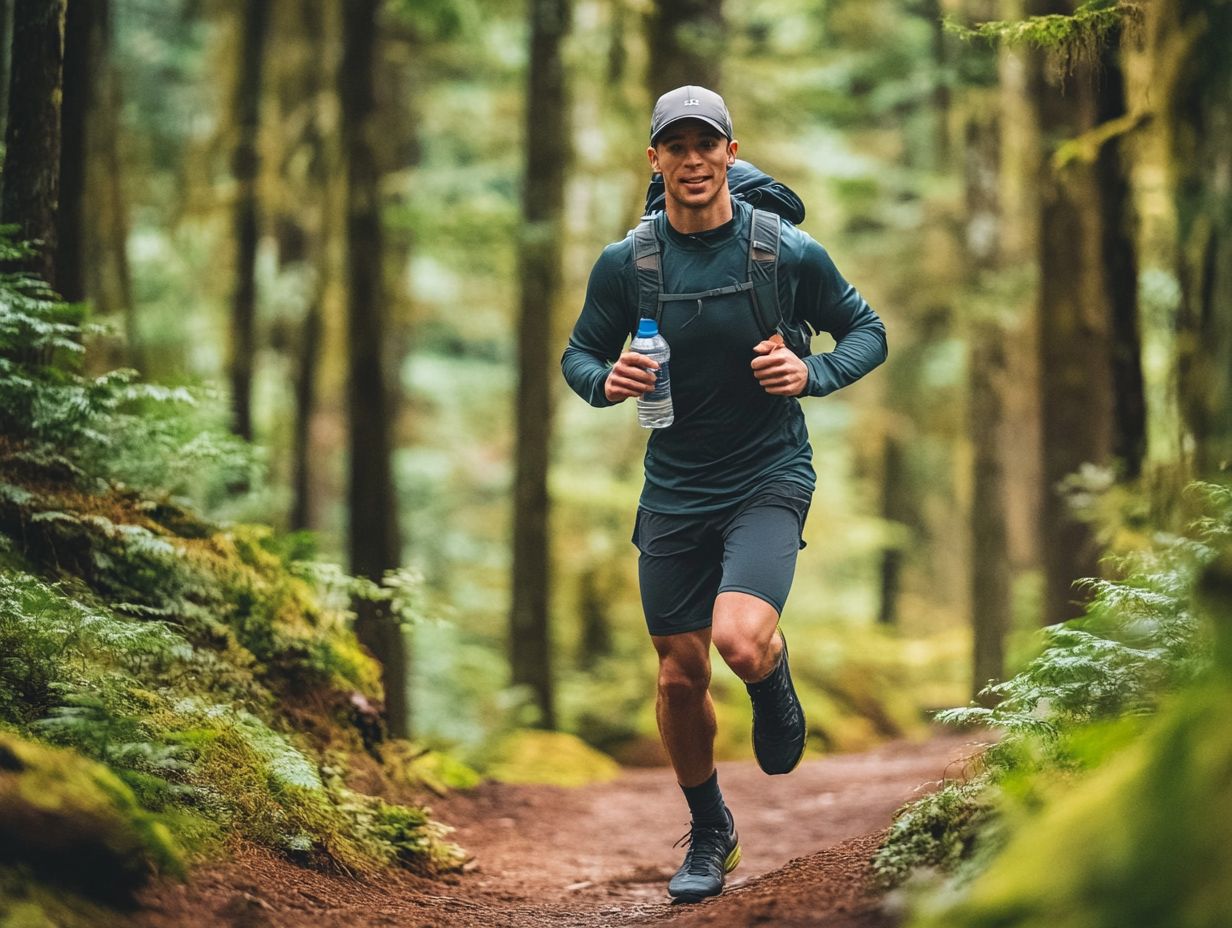
Technical running shirts keep you dry and comfortable on your runs. They use moisture-wicking materials to effectively manage perspiration.
These shirts come in various styles, including short-sleeve, long-sleeve, and tank tops. Each option suits different weather conditions and personal preferences.
Runners prefer breathable fabrics like polyester and merino wool. These materials promote air circulation and whisk away sweat quickly.
A solid base layer is vital for regulating your temperature and ensuring comfort. Layering different tops lets you adapt as the weather changes.
Bottoms
For trail running, running shorts are the best choice in warm weather. Consider having running vests or tights for cooler days.
Avoid cotton; it retains moisture and can cause discomfort. Opt for moisture-wicking fabrics like synthetic blends or merino wool.
The fit is crucial. Your bottoms should allow unrestricted movement without excess material that can cause chafing.
Consider options like thermal leggings or lined shorts for extra warmth and protection. This way, you can focus on your pace and enjoy every step of your run.
Socks
The best running socks offer unmatched comfort and safety. They excel in moisture transfer, essential for long trail runs.
Brands like Darn Tough are known for durability and performance. Choosing the right pair enhances your experience in rugged terrains.
Materials like merino wool and synthetic blends are breathable and wick moisture effectively. A snug fit is vital to avoid chafing and discomfort.
Other reputable brands, such as Smartwool and Balega, offer innovative sock designs tailored specifically for trail running.
Accessories for Trail Running
Gear up with accessories to transform your trail running experience. They provide extra comfort, safety, and convenience.
Key items like hydration packs keep you refreshed on long runs. Running hats and sunglasses protect you from harmful UV rays.
Embracing these accessories can make every run a more enjoyable and secure adventure.
Hats and Sunglasses
A reliable running hat, particularly a women s UV protection hat, is essential for shielding your face from the relentless summer sun. Pair it with running sunglasses like the TIFOSI SWANK POLARIZED for crucial eye protection against glaring rays.
These accessories also enhance your style while supporting your performance during long, challenging trails. The right headgear keeps sweat from dripping into your eyes, allowing for improved vision and focus.
Quality eyewear offers clear vision and filters out harmful UV rays that can cause long-term damage.
When selecting your gear, don t overlook the fit of both the hat and sunglasses. A snug, comfortable hat keeps you focused on the trail, and sunglasses that rest securely on your nose and ears eliminate the need for constant adjustments. This way, you can maintain your stride and truly savor the journey ahead.
Hydration Packs and Belts
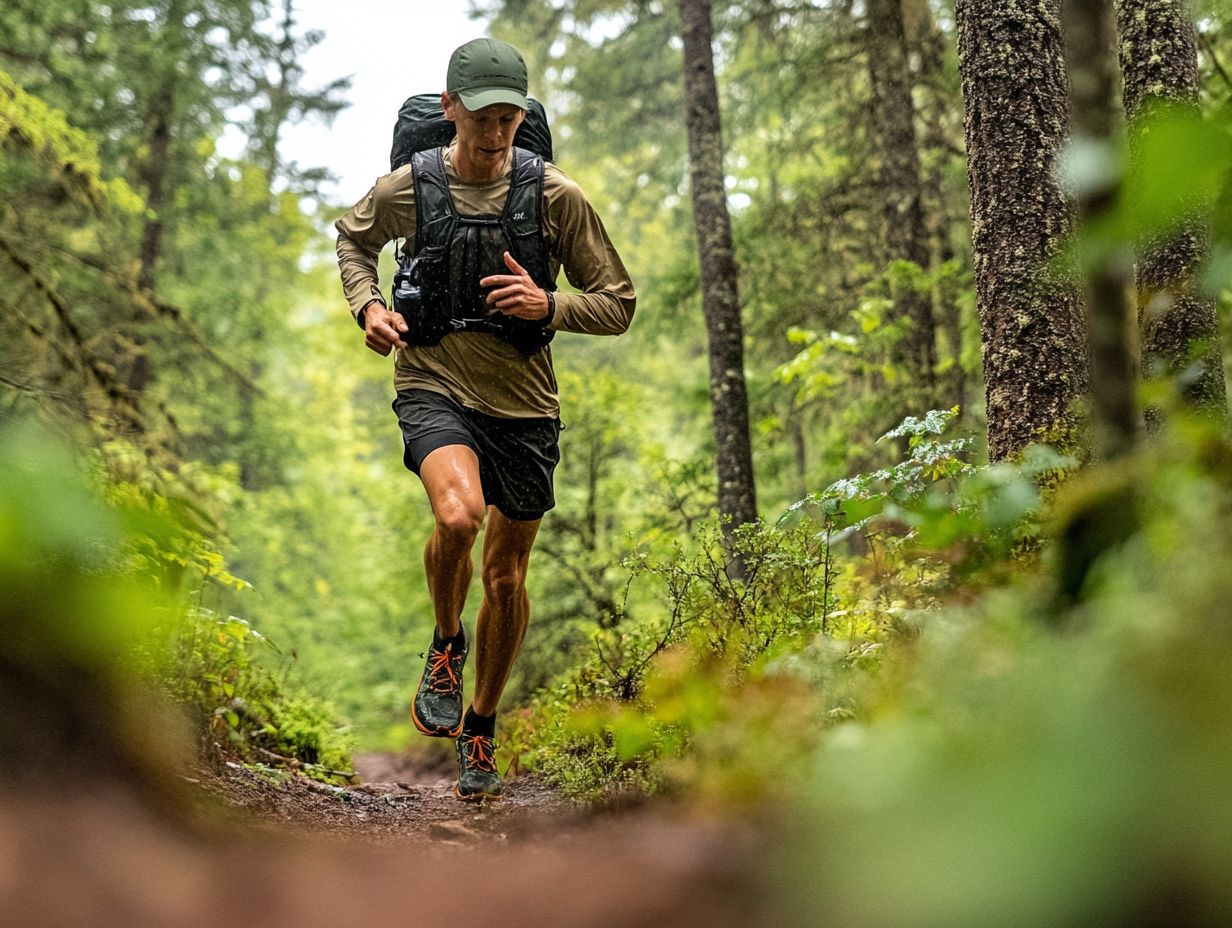
Hydration packs and belts are essential for your running gear, ensuring you stay hydrated on long trails while enhancing comfort and safety. These packs distribute weight evenly, making it easy to carry all your essentials.
With convenient access to water and gear, these packs reduce the need for frequent stops, allowing you to maintain your momentum on longer runs.
When selecting the right hydration solution, consider capacity; a larger reservoir fuels you during very long runs, while smaller options are perfect for shorter adventures.
A good fit prevents chafing and keeps your gear in place. Look for features like extra pockets to stash your keys, nutrition bars, or emergency supplies. These additions ensure you re prepared for any scenario, enhancing your comfort and safety on the trail.
Other Essential Gear
Other essential gear for trail running includes windproof jackets and running gloves that shield you from unpredictable weather, providing optimal coverage outdoors. Incorporating reflective gear enhances visibility during early morning or late evening runs.
These items are vital for maintaining your comfort and safety, especially when conditions take a sudden turn. A windproof jacket protects you from biting winds, while gloves ensure your hands stay warm and functional.
As you navigate through the trails, particularly in low-light conditions, having reflective elements boosts your visibility and signals to others, reducing the risk of accidents. By prioritizing such gear, you can immerse yourself in nature while ensuring your well-being.
Tips for Dressing Comfortably on the Trail
Dressing comfortably on the trail means mastering the art of layering, allowing you to adapt to changing weather conditions.
In cold weather, a thoughtful layering strategy is essential for your comfort and safety, no matter how much the temperature fluctuates.
Layering Techniques
Mastering layering techniques begins with choosing the right base layer that wicks moisture away from your skin. Next, add an insulation layer to retain heat.
The base layer, often crafted from synthetic materials like polyester or merino wool, regulates your body temperature by drawing sweat away. An insulating layer made from fleece or down traps warm air and maintains your body heat during chillier months.
Your outer layer, typically a waterproof and breathable shell, acts as a shield against wind and rain, keeping you dry and secure on your run. Each layer works in harmony, providing a flexible solution for adapting to ever-changing weather.
Choosing the right materials is key to ensuring an enjoyable trail running experience.
Dealing with Changing Weather
Changing weather conditions on the trail require careful planning and flexibility. Whether facing extreme heat or sudden downpours, preparing and dressing the right way is crucial for a safe and enjoyable adventure.
When it s hot, choose lightweight, breathable fabrics. These materials pull sweat away from your skin, helping you stay cool and comfortable.
When rain is forecast, waterproof gear is a must. High-quality rain jackets and quick-drying materials make a big difference in your comfort and safety.
In colder climates, layering is essential. Start with a base layer that wicks moisture, add an insulating mid-layer, and finish with a wind and water-resistant outer shell.
Apply these practical tips to boost your resilience against unpredictable weather. Equip yourself to ensure that your outdoor adventures are both exciting and safe!
Frequently Asked Questions
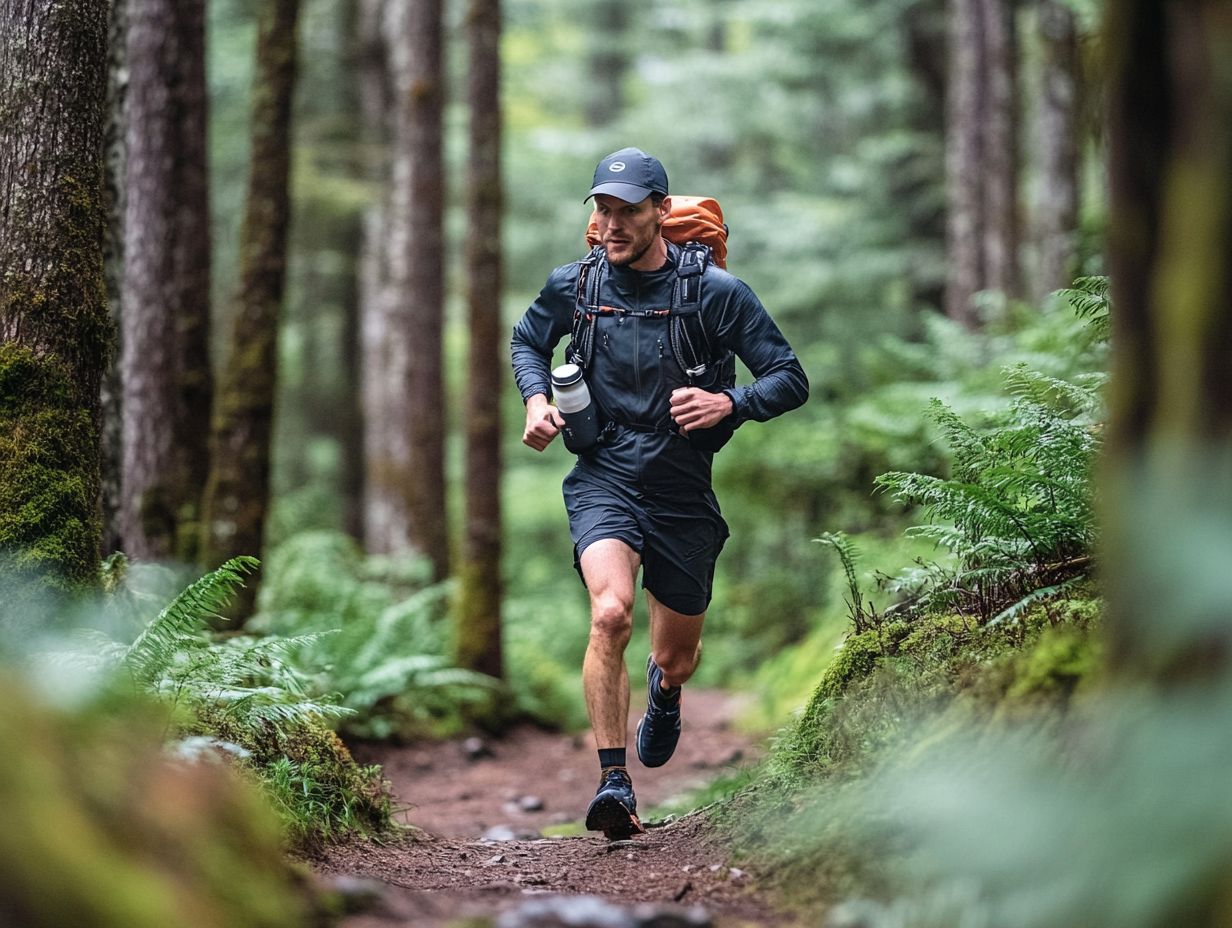
Got questions about trail running gear? Here are some common queries answered!
What is considered appropriate trail running attire?
It depends on the weather, but generally, you need moisture-wicking and breathable clothes, supportive shoes, and a hat or sunglasses for sun protection.
Do I need special shoes for trail running?
Yes, specific trail running shoes provide better traction and support. They help you navigate uneven ground and protect your feet from rocks and other hazards.
What type of fabric should I look for in trail running clothes?
Opt for moisture-wicking and breathable fabrics like synthetic blends or merino wool. These materials keep you dry and comfortable during your runs.
Should I wear a hydration pack or belt while trail running?
It s wise to carry some hydration, especially for longer runs. A hydration pack or belt is a convenient way to bring water and essentials along.
What should I wear for colder weather trail runs?
Dress in layers for cold temperatures. A moisture-wicking base layer, an insulating mid-layer, and a windproof outer layer will keep you warm and dry.
Are there any must-have accessories for trail running attire?
Consider helpful accessories like a hat or sunglasses for sun protection, a buff or bandana to keep sweat and debris off your face, and gaiters to block dirt from your shoes.



